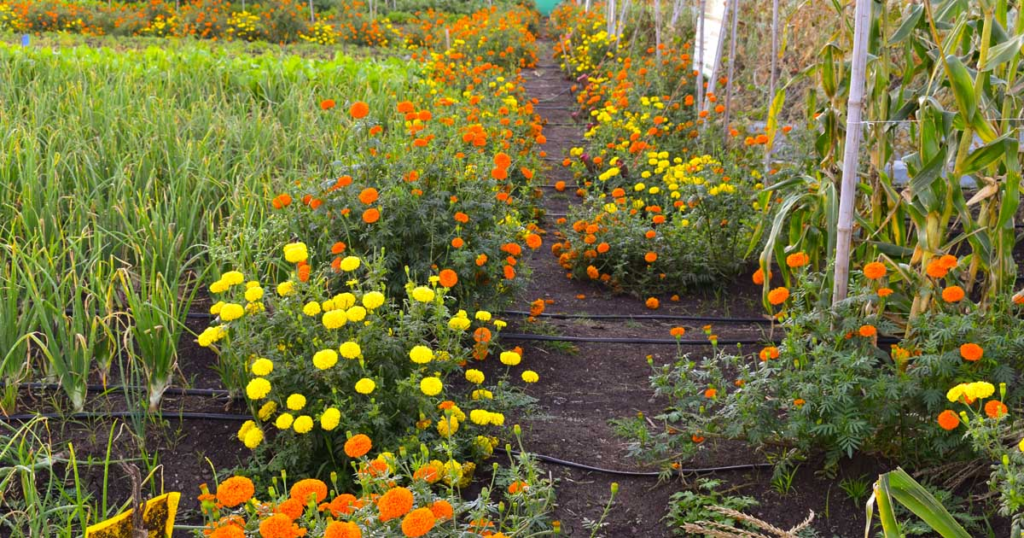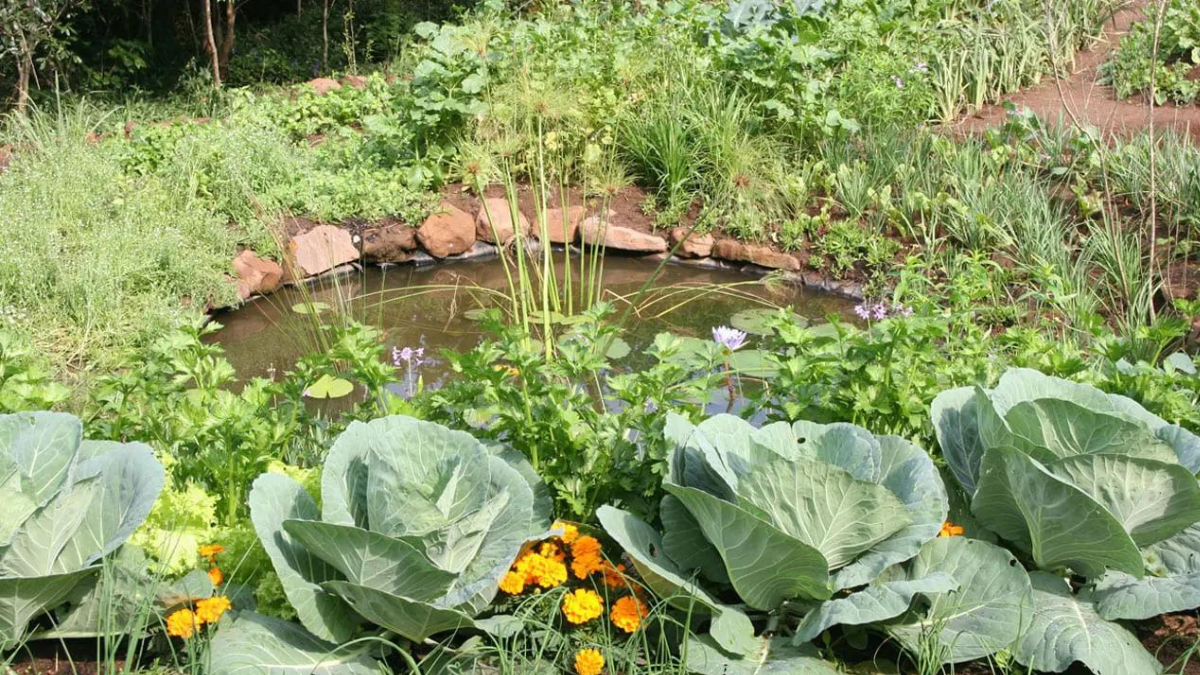Companion planting involves growing different plants together to enhance their growth and protect them from pests. Certain plant combinations have been observed to work synergistically, benefiting each other in various ways, such as repelling pests or attracting beneficial insects.
Ultrasonic Pest Repeller - 6 Pack, Electronic Mouse Repellent, Indoor Rodent Repellent,Rat Repellent Plug in,Insect Repellent,Pest Control for Mosquitoes,Ants,Mice,Squirrel,Fly,Cockroaches
B. Benefits of companion planting for pest control
Companion planting offers numerous advantages for pest control without resorting to harmful chemicals. It helps reduce pest populations, minimizes the risk of pesticide resistance, encourages biodiversity, and promotes a more sustainable and eco-friendly approach to gardening.
II. Companion Plants for Pest Control

A. Marigolds
- How marigolds repel pests
Marigolds emit a strong scent that repels many common garden pests, such as aphids, nematodes, and whiteflies. The presence of marigolds can help deter these pests from infesting neighboring plants.
- Best companion plants to pair with marigolds
Marigolds can be effectively paired with vegetables like tomatoes, peppers, and eggplants, as well as herbs like basil and oregano. These combinations provide mutual benefits, with the marigolds repelling pests and the companion plants enhancing flavor or deterring specific pests.
B. Nasturtiums
- Nasturtiums as a trap crop
Nasturtiums act as trap crops by attracting pests like aphids and cabbage worms away from more desirable plants. They serve as sacrificial plants, luring pests away and minimizing damage to your primary crops.
- Companion plants to grow with nasturtiums
Nasturtiums work well when interplanted with vegetables such as cabbage, broccoli, and radishes. They can also be paired with herbs like mint and dill, which further deter pests and attract beneficial insects.
C. Basil
- Basil’s insect-repelling properties
Basil emits a strong aroma that repels insects like mosquitoes, flies, and tomato hornworms. By planting basil alongside susceptible plants, you can help protect them from pest infestations.
- Ideal companion plants for basil
Basil thrives when planted near tomatoes, peppers, and asparagus. These combinations provide mutual benefits, with basil deterring pests and enhancing the flavor of neighboring plants.
D. Chives
- Chives for deterring pests
Chives have insect-repellent properties that help deter pests like aphids, carrot flies, and Japanese beetles. Their presence can help protect nearby plants from these common garden pests.
- Suitable companion plants for chives
Chives can be effectively paired with roses, carrots, and tomatoes. These combinations not only deter pests but also promote healthier growth and improve the flavor of the companion plants.
E. Lavender
- How lavender repels insects
Lavender emits a fragrance that repels a wide range of insects, including mosquitoes, moths, and fleas. By planting lavender strategically, you can create a natural barrier against pests.
- Recommended companion plants for lavender
Lavender works well when paired with roses, strawberries, and sage. These combinations not only enhance the aesthetic appeal of your garden but also provide a deterrent effect against pests.
III. Interplanting and Succession Planting
A. Definition and benefits of interplanting
Interplanting involves growing different crops or plants in close proximity, allowing them to benefit from each other’s presence. It helps maximize space utilization, improve nutrient cycling, and enhance pest control by disrupting pest habitats.
B. Examples of interplanting for pest control
- Planting aromatic herbs among vegetables: Interplanting fragrant herbs like rosemary, thyme, or sage among vegetables can help repel pests and attract beneficial insects.
- Growing flowers alongside crops: Planting flowers like marigolds, calendula, or zinnias alongside vegetables can attract pollinators, predatory insects, and beneficial nematodes, contributing to pest control.
C. Introduction to succession planting
Succession planting involves sowing seeds or transplanting seedlings at staggered intervals to ensure a continuous harvest throughout the growing season. It helps avoid pest buildup by disrupting their life cycles and provides a more resilient garden overall.
D. Succession planting strategies for pest management
- Crop rotation: Rotating crops annually helps prevent the buildup of pest populations, reduces disease incidence, and improves soil health.
- Quick-maturing and trap crops: Incorporating quick-maturing crops and trap crops into your succession planting plan can help deter pests and divert their attention away from vulnerable crops.

IV. Polyculture and Guild Planting
A. Polyculture for natural pest control
- Advantages of polyculture
Polyculture involves growing multiple crops or plant varieties together, mimicking the diversity found in natural ecosystems. This approach discourages the spread of pests and diseases, reduces weed competition, and enhances overall garden resilience.
- Implementing polyculture in your garden
By intermixing different plants that have complementary growth habits, nutrient requirements, and pest resistance, you can create a balanced and diverse garden ecosystem. Examples include planting a mix of leafy greens, root vegetables, and legumes in the same bed.
B. Guild planting principles
- Guild planting combinations for pest control
Guild planting involves creating plant communities where each member provides specific benefits to others. Some examples of pest-repellent guilds include planting onions, carrots, and leeks together to deter carrot flies or combining corn, beans, and squash to deter pests and improve soil fertility.
- Creating a successful guild planting system
When designing a guild planting system, consider the growth habits, nutrient requirements, and pest resistance of each plant. Aim for a diverse combination of plants that work synergistically to control pests, enhance soil health, and increase overall productivity.
V. Physical Barriers and Deterrents

A. Mulching and weed control
- Using mulch as a physical barrier
Mulching with organic materials like straw, wood chips, or leaves helps suppress weeds, conserve moisture, and create a physical barrier that discourages pests from reaching plants. It also improves soil health and reduces the need for chemical herbicides.
- Weed control methods to reduce pest habitat
Implementing effective weed control measures, such as hand weeding, mulching, or using organic herbicides, helps eliminate pest habitats, disrupt their life cycles, and prevent them from infesting your plants.
B. Row covers and netting
- How row covers protect plants from pests
Row covers are lightweight fabric covers placed over plants to create a physical barrier against pests. They can prevent insect infestations, protect plants from harsh weather conditions, and promote healthy growth.
- Choosing the right netting materials
Selecting appropriate netting materials, such as fine mesh or insect-proof netting, helps protect plants from specific pests like aphids, caterpillars, or birds. Ensure the netting allows sufficient airflow and sunlight penetration.
C. Companion planting with herbs and flowers
- Repelling pests with scent and color
Integrating pest-repellent herbs and flowers, such as garlic, mint, or marigolds, among your vegetable or fruit plants can deter pests with their strong scents and vibrant colors.
- Effective combinations for companion planting
Consider planting herbs like thyme, oregano, or sage near susceptible plants to repel pests. Interspersing flowers like nasturtiums, zinnias, or cosmos among vegetables can attract beneficial insects and add beauty to your garden.
VI. Conclusion
Companion planting provides a natural and sustainable approach to pest control in your garden. By utilizing the principles of companion planting, interplanting, succession planting, polyculture, and physical barriers, you can minimize pest damage, attract beneficial insects, and create a thriving ecosystem in your backyard. Embracing these methods not only promotes healthy plant growth but also reduces the reliance on synthetic pesticides, making your garden safer for you, your family, and the environment.


